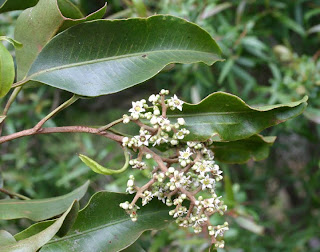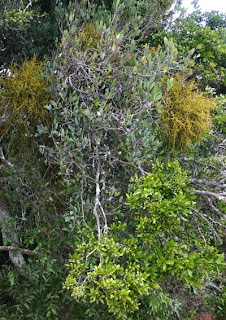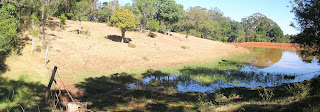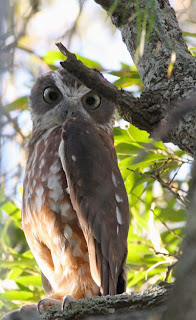Another species to add to the list, Bar-shouldered Dove. It was sitting in a thicket of vine on the eastern side of the scrub calling forlornly. The only bird that answered was the resident Spotted Dove. I now make the bird list 51 species of which 41 have been recorded in Franke Scrub, and 10 more species recorded on the road reserve, adjacent areas or flying overhead.
As usual butterflies were everywhere, mainly Orchard Swallowtail, Black Jezabel and Caper White though there were a couple of other Whites flying around that I didn’t identify although I think one was the Chalk (or Striated Pearl) White.
The Flying Foxes are still there, although I only saw three, hanging in the same tree as last month.
Cheers, Lesley
P.S. Can either of you tell me what the large, high canopy tree is that is flowering in the centre of the scrub at the moment? Birds don't seem to be too attracted to it though the Scarlet Honeyeater was calling from the high branches.











